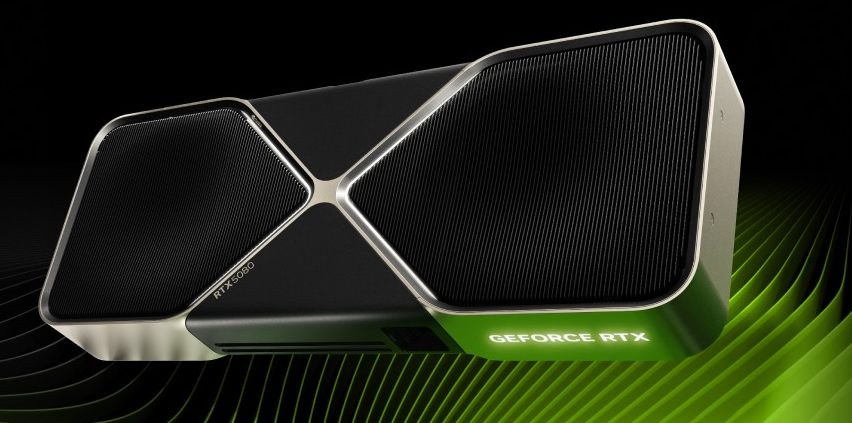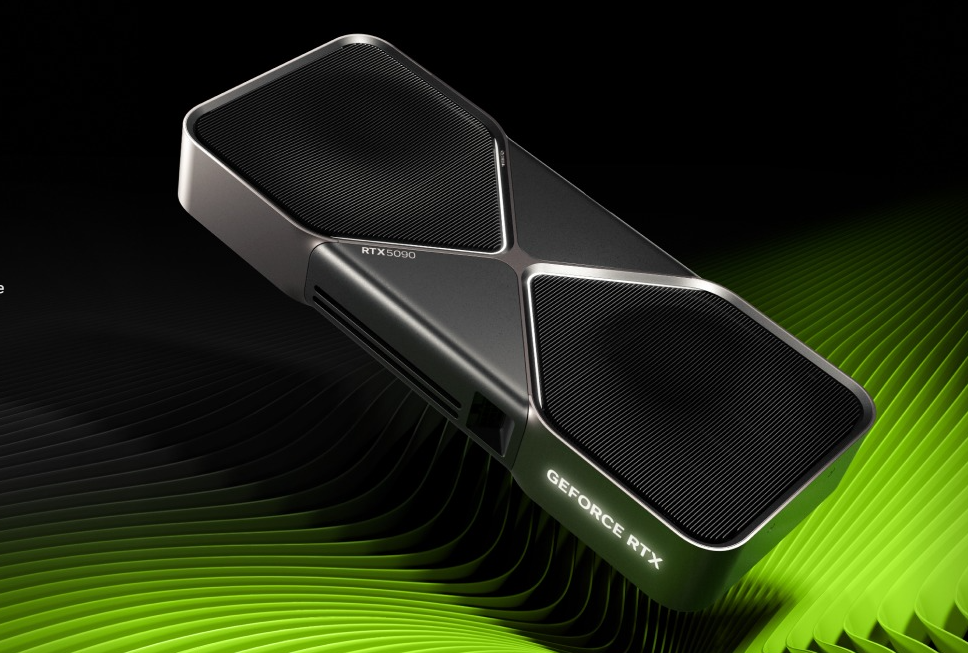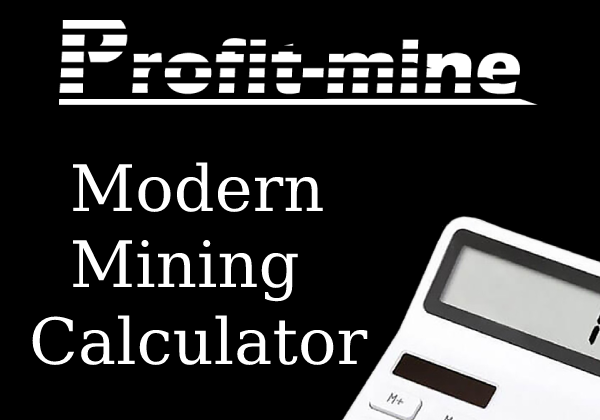 Yesterday, January 7, 2025, Nvidia introduced a new generation of its RTX 5000 graphics cards, codenamed Blackwell. So far, everyone on the Internet is discussing the new DS4 and a multi-frame frame generator, which promise to increase the frame rate in games up to 2 times. We will compare the pure GPU performance and memory bandwidth, since it is these characteristics that directly affect the hashrate of video cards in mining, rather than the new AI-based technologies being promoted.
Yesterday, January 7, 2025, Nvidia introduced a new generation of its RTX 5000 graphics cards, codenamed Blackwell. So far, everyone on the Internet is discussing the new DS4 and a multi-frame frame generator, which promise to increase the frame rate in games up to 2 times. We will compare the pure GPU performance and memory bandwidth, since it is these characteristics that directly affect the hashrate of video cards in mining, rather than the new AI-based technologies being promoted.
Technical specifications and hashrate of Geforce RTX 5070
| Specifications | RTX 4070 |
RTX 4070 Super |
RTX5070 |
RTX5070 VS RTX4070 |
|---|---|---|---|---|
| Release date | 13.04.2023 | 15.01.2024 | 07.01.2025 | |
| Frequency GPU (BOOST) MHz | 1920 (2475) | 1980 (2475) | 2160(2510) | |
| Cuda Cores | 5888 | 7168 | 6144 | +4% |
| GFLOPS FP32 | 29150 | 35480 | 30970 | +6% |
| Memory | 12Gb GDDR6X | 12GB GDDR6X | 12Gb GDDR7 | |
| Memory bus width, bit | 192 | 192 | 192 | |
| Total memory bandwidth,Gbit/s | 504 | 504 | 672 | +33% |
| Power usage | 200W | 220W | 250W | +25% |
| Price, USD | 599 USD | 599 USD | 549 USD |
In terms of pure GPU performance, the Geforce RTX 5070 did not grow much compared to the RTX4070, as the processing speed of FP32 mathematical operations increased by only 6%. At the same time, electricity consumption increased by a decent 25%. That is, in terms of mining GPU-dependent algorithms, the RTX 5070 will not be the most profitable option. The RTX 4070 super is even better suited for these purposes, but of course it will depend on the price of the graphics cards.
But what really had a big impact on the technical data of the video card was the use of the new GDDR7 memory, which immediately boosted the performance of the memory subsystem by 33%. Which, of course, will directly affect the increase in hashrate when mining cryptocurrencies, where the mining algorithm intensively uses the memory of video cards.
With the advent of real RTX 5070 video card tests in cryptocurrency mining, this material will be updated
Technical specifications and hashrate of the Geforce RTX 5070Ti
| Specifications | RTX 4070 Ti |
RTX 4070 Ti Super |
RTX5070Ti |
RTX5070Ti VS RTX4070Ti |
|---|---|---|---|---|
| Release date | 05.01.2023 | 24.01.2024 | 07.01.2025 | |
| Frequency GPU (BOOST) MHz | 2310 (2610) | 2340 (2610) | 2300(2450) | - |
| Cuda Cores | 7680 | 8448 | 8960 | +16% |
| GFLOPS FP32 | 40000 | 44100 | 44350 | +11% |
| Memory | 12Gb GDDR6X | 16GB GDDR6X | 16Gb GDDR7 | +33% |
| Memory bus width, bit | 192 | 256 | 256 | |
| Total memory bandwidth,Gbit/s | 504 | 672 | 896 | +77% |
| Power usage | 285W | 320W | 300W | +5% |
| Price, USD | 799 USD | 799 USD | 749 USD |
In terms of pure GPU mining performance, the RTX 5070Ti offers 11% more power than its predecessor, the RTX 4070Ti. The memory subsystem was immediately upgraded by 77% thanks to GDDR7 and a 256-bit memory bus. Although if you compare it with the RTX 4070 TiSuper, the upgrade to the RTX 5070 Ti will not be so impressive. Again, the choice here is again not obvious in favor of the new generation. Everything will depend on the actual prices in the stores.
Technical specifications and hashrate of the Geforce RTX 5080
| Specifications | RTX 4080 |
RTX 4080 Super |
RTX5080 |
RTX5080 VS RTX4080 |
|---|---|---|---|---|
| Release date | 16.11.2022 | 31.01.2024 | 07.01.2025 | |
| Frequency GPU (BOOST) MHz | 2205 (2505) | 2295 (2550) | 2300(2620) | |
| Cuda Cores | 9728 | 10240 | 10752 | +10% |
| GFLOPS FP32 | 43000 | 47000 | 56280 | +31% |
| Memory | 16Gb GDDR6X | 16GB GDDR6X | 16Gb GDDR7 | - |
| Memory bus width, bit | 256 | 256 | 256 | - |
| Total memory bandwidth,Gbit/s | 716 | 736 | 960 | +34% |
| Power usage | 320W | 320W | 360W | +12% |
| Price, USD | 1199 USD | 999 USD | 999 USD |
For the RTX 5080, switching to GDDR7 memory traditionally gives +33% in memory bandwidth, but the GPU power for the RTX5080 was also not deprived, because they immediately added 31%. It turns out that the RTX 5080 is a completely new generation, not only for games, but also for mining.
Technical specifications and hashrate of the Geforce RTX 5090
| Specifications | RTX 4090 |
RTX 4070D |
RTX5090 |
RTX5090 VS RTX4090 |
|---|---|---|---|---|
| Release date | 12.10.2022 | 28.12.2023 | 07.01.2025 | |
| Frequency GPU (BOOST) MHz | 2235 (2520) | 2280 (2520) | 2010(2410) | - |
| Cuda Cores | 16384 | 14592 | 21760 | +33% |
| GFLOPS FP32 | 73070 | 66530 | 104800 | +43% |
| Memory | 24Gb GDDR6X | 24GB GDDR6X | 32Gb GDDR7 | +33% |
| Memory bus width, bit | 384 | 384 | 512 | - |
| Total memory bandwidth,Gbit/s | 1008 | 1008 | 1792 | +77% |
| Power usage | 450W | 425W | 575W | +28% |
| Price, USD | 1599 USD | 1835 USD | 1999 USD | - |
| Algorithm |
RTX5090 Stock |
RTX5090 Downvolt* |
|---|---|---|
|
XelisHashv2 |
114Kh/s 436W |
131Kh/s 348W |
| Autolykosv2 |
531MH/s 405W |
623MH/s 334W |
| Octopus |
|
175MH/s 440W |
|
KawPoW |
|
103MH/s 544W |
|
Ethash |
|
178MH/s 350W |
|
Fishhash |
|
117Mh/s 329W |
The new Nvidia RTX 5090 top is good in all respects, as the GPU is 43% more powerful and the memory is 77% faster. However, you will have to put up with higher energy consumption (+28%) and a higher price (+25%). But what Nvidia offers in its new flagship, these costs look quite justified. Again, you need to look at prices based on availability, because at first they will be greatly overestimated, due to the fact that not only gamers and miners will want to upgrade to RTX 5090, but also for other tasks related to artificial intelligence.
Conclusion: The new generation of Nvidia graphics cards in terms of mining starts only with the RTX 5080 and for the RTX 5090, where memory and GPU have been evenly improved. For the younger RTX 5070 and RTX 5070 Ti models, miners will be able to notice a significant difference only for mining algorithms related to intensive use of video memory, but unfortunately, cryptocurrencies with a bias towards GPU computing are now more popular in video card mining.










